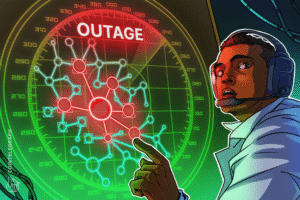Making the US energy grid more resistant to shocks and maximizing grid uptime is central to the Trump administration’s AI strategy.

Blockchain technology can help modernize the US electrical grid by marshaling human labor and stranded resources to create decentralized energy infrastructure, according to Cosmo Jiang, a general partner at venture capital firm Pantera.
“All of civilization from the beginning of time has been built on the coordination of incentives, and blockchain is just a new way to incentivize people in a decentralized way that wasn’t possible before,” Jiang told Cointelegraph in an interview.
The VC explained that companies in the gig economy have devised ways of allowing people to monetize their free time and resources outside of their normal working hours through freelance commitments. Blockchain can tap into this by coordinating unused infrastructure, labor, and resources to build out a decentralized energy grid, Jiang said:
“There are a few protocols that specialize in using token incentives to encourage everyday people to install solar panels on their roofs or install batteries in their homes. And that way, you create this energy grid that isn’t centralized and deployed through heavy capital expenditure.”
Jiang concluded that this type of energy decentralization strengthens the grid while also cutting through the regulatory red tape that the Trump administration said is one of its three pillars of “America’s AI Action Plan,” a strategy to make the US the global leader in artificial intelligence.









